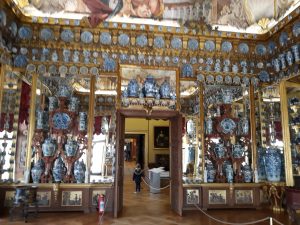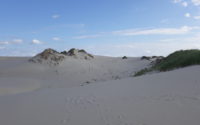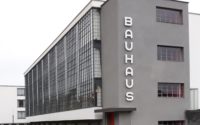Currywurst and Luther
March 2018
I think now that it’s reasonable to speculate that the Pach side of the family has German origins and moved east in their capacity as merchants and traders. With an overview of the history of central Europe: particularly the Mongol and Tatar invasions, the former particularly devastating, the Black Death, they perhaps saw a ‘gap in the market’ to help rebuild Poland and carve out a profession for themselves. Germans were invited to Poland and with them they brought, for example, the Magdeburg Laws which many Polish cities subsequently adopted. My grandmother’s side, the Moszoro’s on her father’s side originated in Armenia and Hungary and her mother’s in Prussia. Settling in Lwów, they were probably, to use the Polish term, ‘szlachta’ which roughly translates as gentry.
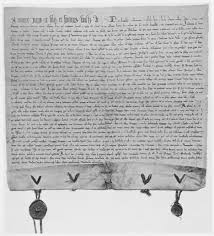
By returning to Poland and Germany, I’ll once again get a feel for the regions they lived in and the languages they spoke and hopefully I can pitch myself in at a reasonable level with the language and on a more ridiculously emotional level, I admit, the air they breathed.
06.03.2018
I’m back in Germany, in Berlin. I had intended to visit the Bauhaus in Dessau for a couple of days. With my background in architecture, I’ve always been attracted primarily, to the traditions of the Bauhaus but I’ll have to wait a bit longer, 2 years to be exact, as the building is about to undergo an overhaul commencing this very day. So mark in the diary 06.03.2020 to come to the re-opening.
As I’m all Hitlered and Stasied out and intend to avoid all future access to these subjects, unless it’s something totally original, the challenge will be to discover ordinary Berlin; if such a thing exists.
My father, while not a Lutheran, was a great admirer of Martin Luther and so I will try to discover what I can about Luther because I understand that part of my family were Lutherans fleeing Hungary due to persecution sometime in the 17th century. Poland tolerated all religious refugees, persecuting no one.
I hadn’t imagined that I’d be arranging an appointment by phone for my Polish passport with the Polish Embassy in Ireland from Berlin. But that’s in the true nature of my citizenship of the world or ‘nowhere.’
07.03.2018
Looking for different things to explore is an easy exercise in Berlin and I’ve selected two. Suarezstraße is full of antique shops, some good, some that produce a laugh and some with total rubbish from the uninitiated point of view (mine).
On to the Currywurst Museum – Berlin’s unique attempt at sausage making. On the way I’m stopped by a group of American tourists who ask if I know the way to Checkpoint Charlie which just so happens to be on the way to the Currywurst museum. I’m complimented on my excellent English and when they ask where I’m going they add the museum to their itinerary.
The museum has a fun theme which mirror the origins of Currywurst in the ruins of post-war Berlin in the midst of rationing. A clever hybrid of cultures; German sausage, British ketchup and spices from its then Empire all put together by a very enterprising Herta Heuwer. Actually the recipe was kept secret and she carried it to her grave. The exhibition is well worth a visit depicting as it does the Currywurst as a fast food eaten by all classes of people and deliberately eaten standing to reflect the latter. I also learned a few tips about spices and visitors are invited to try and identify the various spices added. Anyone who so desires, can slip into anonymity in Berlin, anyone wanting to take stock of their lives or change the direction of their lives can do so in Berlin – nothing is expected of you. It has a more egalitarian feel than say London. Berlin clears you of self-consciousness. Maybe it has something to do with its recent history but Berlin seems to me to be saying ‘Whoever you are, wherever you want to be, that’s fine by me.’
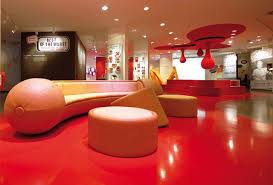
08.03.18
I have always wanted to visit Magdeburg, probably because I always liked the name as it brought a sense of past importance which persists to this day. Just how much I had no idea as I look around the Christmas Market Place with it’s unusual statues; a gilded horseman, a reindeer wearing a gold necklace and a grim faced Roland of Magdeburg grasping a fearsome looking sword standing guard over the old Town Hall among the fine old buildings and of course the mighty River Elbe divides the city geographically.

It has connections with Martin Luther; he visited the city in 1497 and returned again to preach in 1524, seven years after the recognised year 1517 for the beginning of the Reformation. Magdeburg was a stronghold of Lutheranism and suffered as a result during religious wars. My Hungarian forebears who were Lutherans probably took their inspiration from his preachings and were persecuted in the Austrian Empire for their beliefs, before taking refuge in Poland in Lwow. A statue to Luther stands outside St. John’s Church; a church building has stood on this site continuously since 941. There are numerous quirky details on the church buildings, such as metal hands or fish as handles to church doors.
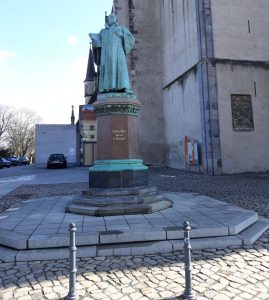

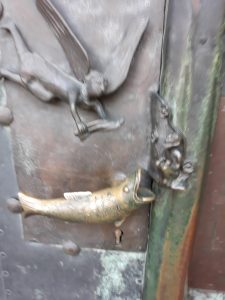
The biggest treat is a pink coloured art nouveau building, Hundertwasser Haus designed by the Austrian architect Friedensreich Hundertwasser and completed in 2005. it contains administrative, commercial, retail and residential units. As it is a sunny day, I take a walk around this fine city and along the Elbe and over one of its bridges to visit at 60 metres the tallest wooden building in Germany, the Jahrtausendturm (Millenium Tower) completed in 1999 for the Federal Republic Garden Show. It’s like a giant helter-skelter and contains on each floor examples of science, botany etc, generally Magdeburg’s contribution to the European and world story from the Middle Ages on. Unfortunately today it is closed, but to compensate the Max Planck Institute Building is located not too far away. This complex completed in 2005 is a must visit for all architects and persons with an interest in architecture. Yes, I like Magdeburg.
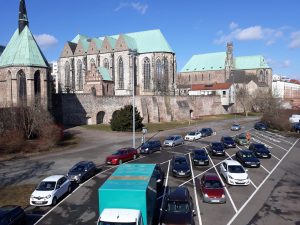
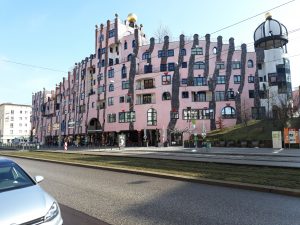
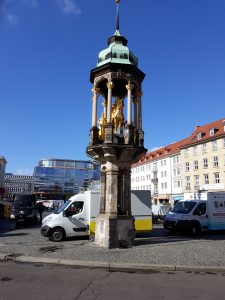

09.03.2018
After a couple of false starts, I finally make it to Charlottenburg Schloss. I assumed that Charlottenburg S-bahn station was the stop for the palace. In fact the station is Sophie Charlotte Platz, which figures as the palace was built for the Princess. She was the wife of Friederich I Elector of Brandenburg and also sister of George Elector of Hannover, later to be crowned George I of Great Britain. Friederich later crowned himself King of Prussia. One intriguing painting in this palace, which is full of an eclectic mixture of cultures, is the meeting of the three kings, Friederich, Augustus II the Strong of Poland and Frederick IV of Denmark. The meeting took place in 1709 at Potsdam and Charlottenburg.

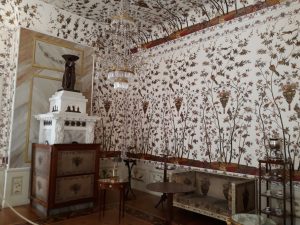
Eastern Room
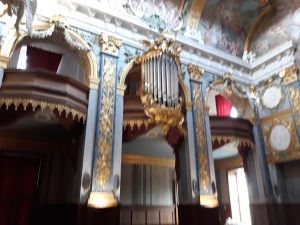
The Prussians were in a hurry to legitimise themselves as a leading European dynasty and around the beginning of the 18th century they set about marrying into Europe’s leading royal families.
It is hard to imagine, as you cross from one end of the city, east to west and north to south, that less than 30 years ago a wall divided this city with armoured checkpoints creating two cities within one. Imagine if this had happened in London! Perhaps then Britain would understand why the European continent has to work on the basis of mutual benefit. This striving for economic dominance always results in war. And yet history has a habit of repeating itself
10.03.2018
If in doubt leave early, especially when away from home and you are warned of public transport disruption. Maintenance works are happening on one of the S-bahn lines and so I need to use another strategy to get to Berlin Sudkreuz Station where I’ll get the ICE( Inter City Express) train bound for Munich but my stop is Wittenberg-Lutherstadt. On this occasion I’m lucky as the maintenance works do not delay me and I’m at Sudkreuz in loads of time.
I must look like a local judging by the number of people who ask me directions, and this time it’s a Russian inquiring about the train for Nürnberg. I ask him what is his train number but he does not know, but then I discover he has no ticket and so I direct him to the ticket office and explain to the clerk what he needs. How on earth does he get around Russia? Not unless he’s a member of the Russian Mafia or the FSB, in either case I guess he doesn’t need a ticket on Russian trains.
And so to Wittenberg sitting in a reserved seat that’s not mine. I had imagined that I would not need one as I’m not going that far. Lesson learned, but at least I find an unreserved seat. Wittenberg-Lutherstadt is all Reformation and Luther on a grand scale. Then you wonder what all the fuss was about way back in 1519. After all, he was only trying to blow the doors off by highlighting the scandal of the selling of indulgences, not trying to collapse the whole edifice of which the Pope and the authorities in the Vatican accused him of doing. Shame the Pope took the huff as it might have saved a lot of subsequent stake burnings, beheadings, gougings, rackings, hanging drawing and quarterings ,and many other not very nice things. Luther’s objections were perfectly reasonable and theologically sound. What a pity that Luther was allegedly accused in later life of being an antisemite.
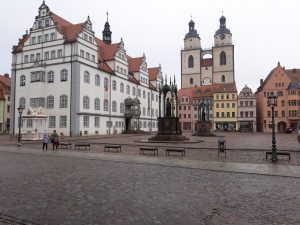
All Saints Church, on the door of which Luther nailed his 95 theses and the adjoining castle display an excellent exhibition outlining Luther’s life and there I learn of Philip Melanchthon who was a close collaborator and leading Reformation figure. I visit both houses and there is a painting of Luther, Melanchthon and John Calvin meeting. I understand that such a meeting never took place as Luther did not have much sympathy for Calvin’s teachings which he considered extreme. The next time I hear some Calvinist Presbyterian berating the figure of Christ on the cross, candles and devotion to Mary, I should refer them to Lutheran churches which display the first two and that Luther held that devotion to Mary was a perfectly reasonable Protestant practice.
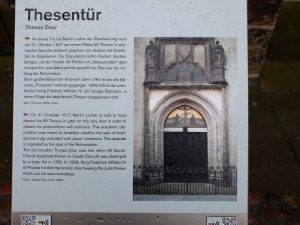
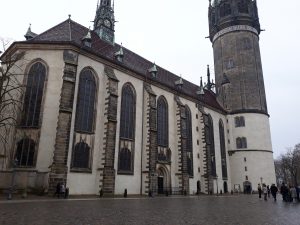
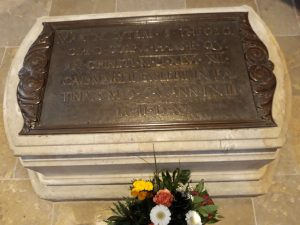
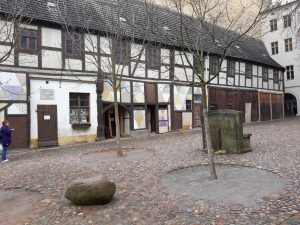
Turning points in the course of history are such as Luther performed at Wittenberg. Just a thought; imagine for a moment what might have happened if at the last minute an envoy from the Pope arrived at Luther’s residence to inform him that the Pope had changed his mind and that he agreed with Luther. Draw your own conclusions, there are no right or wrong answers. Historians are the ones who write with a bias. Or suppose something more bland had happened….like the wheel falling off his cart on the way to Wittenberg or he forgot to bring a hammer to nail his 95 theses to the door of the church.
I recall my father referring to his Prussian great-grandparents and grandparents as Roman Catholics and I wondered if he was mistaken. That was until I discovered a Catholic Church of St. Mary which was used by Catholic members of the Prussian Military. This now makes sense and my father may not have been mistaken after all, as the family was indeed military.
I have been meet with kindness and friendliness by the locals, adding to my feeling of being at home in Germany as indeed I do with Poland. Boundaries may change but a person’s sense of belonging does not follow arbitrary lines drawn by politicians, only for what she or he feels in their heart…and it is not nationalism.
Footnote: The Currywurst Museum is now permanently closed.
Ends.
